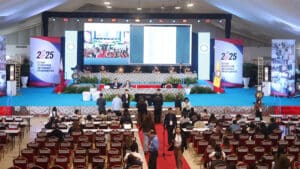When the Miss Universe contest was held in the Philippines nearly two decades ago, the Philippines’ representative Charlene Gonzales was asked how many islands made up the archipelago. She famously responded by first clarifying if the judges wanted to know the number at high tide or at low tide.
If that same question were to be posed at another, future competition held a few decades from now, the number of islands that make up the nation is predicted to be entirely different due to rising sea levels around the world. Several models and projections have pictured the Philippine archipelago shrinking as the land is covered by water.
Vulnerability
Many researchers have focused on how coastal communities and governments are handling or will handle such scenarios. To assist with these efforts, a recent study from Japan’s Hokkaido University described a metric by which the vulnerability of a coastal community can be evaluated. The study’s first author Pedcris Orencio, who worked in coastal resources management in the Philippines for several years before pursuing graduate studies in Japan, and his colleague Masahiko Fujii, wrote that the coastal community vulnerability index (CCVI) could be used by local officials to shape policies for these areas as higher scores indicated the perceived vulnerability of a community.
To demonstrate the CCVI’s utility, a pilot study was conducted involving five barangays in Baler, Aurora. Orencio and Fujii surveyed these five coastal communities, talking to people in several dozen households at each barangay. Based on their responses, the researchers ranked each community based on seven factors, including geography, economy and livelihood, policy, food security, environment, demographics and capital good.
The researchers determined that while the five barangays had similar CCVIs, the rating for barangay Sabang suggested it was to be considered slightly more vulnerable than the others. Orencio and Fujii noted that its higher CCVI value was primarily due to the geographic component. They pointed out that while this community is dependent on fishing both as a means of income and a source of food, the people are not very active in environmental management of this resource.
The result for some factors appeared to cancel out the effects of other factors. For example, barangay Zabali had high marks in food security and livelihood because fishing was both the primary source of food and income. Its low geographic score partially offset such high ratings, and the barangay ended up with the lowest CCVI score of the five communities.
State of being
“The results, however, should not be treated as an outcome but rather as a state of being,” the researchers wrote in their conclusions. “Wherein changes in social equities, resource distribution and access, opportunities in human security, livelihood patterns, and institutional management structures have influenced the conditions that make communities susceptible to special hazard effects.” If the situation changes in any of these factors, their words suggest, the risk factors and perceived vulnerabilities associated with these sites are likely to shift in accordance.
The study was published online July 14 in the journal Ambio.
E-mail the author at massie@massie.com.


